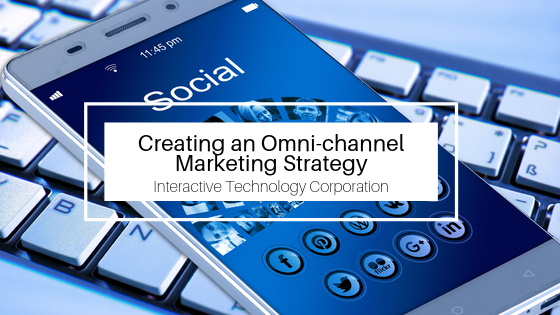Today’s consumers switch between devices and marketing channels without a second thought. And your marketing strategy should too – if you want to be where your customers are, that is. That’s what omni-channel marketing is all about. HubSpot defines omni-channel marketing as “a multi-channel approach to marketing, selling, and serving customers in a way that creates an integrated and cohesive customer experience no matter how or where a customer reaches out.”
If you’re like most businesses, you’ve probably invested in multi-channel marketing, meaning you have a Twitter, Facebook, and Website to engage with your customers. However, that experience is still not the omni-channel experience unless all channels are seamlessly connected and providing a consistent message across all platforms. The omni-channel model places your customers at the center of your business model. This assures a seamless customer experience, no matter which device or platform they choose to engage with your brand. So how do you develop an omni-channel marketing strategy? Check out the tips below.
Customer First
To begin planning an omni-channel marketing strategy, you’ll need to have a thorough knowledge of your customer personas. How do they engage with brands and make purchasing decisions? What channels do they use for acquiring information to make buying decisions? What types of marketing are they likely to engage with rather than outright ignore? Gathering this data can help direct your strategy building efforts.
Determine the various ways your customers connect across devices and provide relevant content that matches the context. Emphasize the channels you know your customer base uses most. Don’t spread yourself too thin by having a presence on every channel, but make sure you have a strong presence where your customers are.
Paying attention to consumer behaviors and providing personalized experiences based on this information can make your customers feel like they’re receiving individual attention. This helps to build customer relationships.
On the Same Page
Various departments of your company will need to be able to work together to be successful at providing a truly seamless customer experience. Sales, PR, product development, customer service, and marketing all need to understand how they contribute to the omni-channel strategy. There has to be effective, cross-departmental communication.
Tools
Integrating your marketing technology tools (marketing technology stack) is an essential step in the process. Each company may rely on a variety of different tools, but most businesses rely on customer relationship management (CRM) software and analytics programs. Other tools that may be integrated are email services, web/video conferencing technology, automated marketing tools, etc. Ensuring these systems are all complementing each other can allow you to reach your customers with relevant content when they need it most.
Responsive Design
To be where customers expect you to be in a way that meets their needs, your web pages must utilize responsive design. Having web pages designed responsively will ensure that no matter what device customers use, they’ll see a page that is optimized for their device’s screen size.
These are just a few of the considerations you will need to make when creating your company’s omni-channel marketing strategy. Though this may seem like a great deal of effort, the returns are often well worth the hassle.

